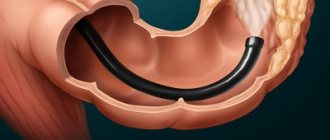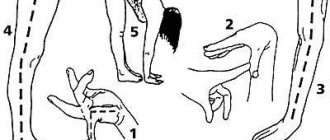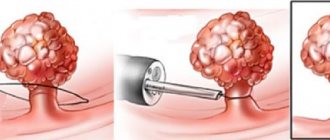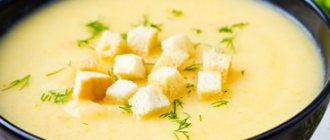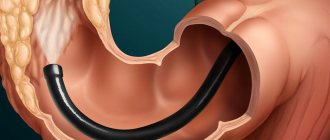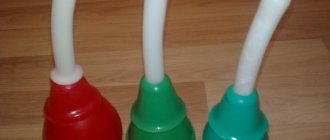pyelonephritis
Ultrasound tests
Pyelonephritis is an inflammatory process that occurs in the kidneys, affecting the pelvis and renal calyces. Like all types of inflammatory processes, pyelonephritis can have an acute stage with a rapid and sharp rise in temperature, aching pain in the lower back, and a chronic stage, in which the disease reminds itself from time to time. If you do not adhere to dietary recommendations, the disease from a sluggish current process returns to the stage of acute exacerbation.
Diet rules
Diet in cases of pyelonephritis in adults plays a vital role in treatment. Any non-compliance with the diet can lead to a worsening of the disease and an increase in the duration of drug therapy. Proper nutrition for pyelonephritis is usually selected with the aim of normalizing metabolic processes in the patient’s body, quickly removing toxic substances, nitrogenous compounds and salts. If the correct diet is prescribed and the patient follows it, a clinical effect will soon be noted.
The basic principles of dietary nutrition according to Pevzner, which is used in cases of therapeutic treatment of pyelonephritis, include the therapeutic “Table No. 7”. Its essence is to reduce daily salt intake to a minimum amount, reduce protein foods, and increase the proportion of vitamins consumed.
However, it is important to remember that a specialist must prescribe the diet in detail. For example, a complete refusal of salt can lead to salt-wasting kidney syndrome or renal failure, so the doctor draws up a menu where the maximum daily salt intake for the patient does not exceed 10 grams. However, with profuse, incessant vomiting, high fever and severe sweating, doctors increase the amount of salt for the patient to 15 grams.
A diet for renal pathologies for adults involves fortifying food. For patients with pyelonephritis, the amount of daily intake of vitamins A, group B and should be increased by one and a half times. The diet menu should include easily digestible foods that have undergone gentle heat treatment during preparation. With this diet, preference should be given to steam cooking with the addition of salt at the end of the cooking process. In addition to steamed food, you can eat boiled food; fried food is not recommended. Fatty foods are also not advisable for kidney disease. It is worth eating boiled food at least 5 times a day, however, if a high body temperature occurs, it is important to reschedule the main meal to the moment when the body’s thermoregulation is improving. That is, it is advisable to eat more at normal temperatures, and drink more at elevated temperatures.
The main goals of the diet for pyelonephritis are the following processes:
- creating optimal conditions for normalizing kidney function;
- resumption of the optimal metabolic process in all organs and systems of the body;
- lowering blood pressure;
- getting rid of fluid stagnation in the body and swelling;
- creating conditions for the complete removal of salts, toxins and nitrogenous compounds.
In cases of pyelonephritis in children, the diet for them is not fundamentally different from that described above. The child's nutritional characteristics may be his personal preference for certain foods. For example, if you do not want to drink a lot of water, it is important to offer your child to drink fruit drink, juice, or tea. The liquid should enter the sick body often, in small quantities. In the case of a child’s diet, it is advisable to provide his diet with 50% fermented milk products, eliminate cocoa and chocolate, salty foods (nuts, chips, crackers) and soda from the menu.
In the case of the occurrence of this disease in infants, it is important to take into account certain features when preparing their diet. The acute form of the disease must be accompanied by a water-tea diet, and breastfeeding must be strictly dosed. If an infant is bottle-fed, then in cases of pyelonephritis he should be fed fermented milk products. At the same time, it is necessary to strictly control the salt and protein content in products for feeding infants. To feed infants, it is necessary to choose products in which extractive substances will be completely absent.
Diagnostics
Diagnosis of pyelonephritis is based on laboratory methods - detection of high levels of leukocytes (blood cells that fight bacteria and are responsible for inflammation) in the urine and detection of the bacteria themselves in the urine. To a first approximation, such information is provided by a general urinalysis
; its results are clarified by urine analysis according to Nechiporenko and bacteriological culture of urine with determination of the sensitivity of the flora to antibiotics and bacteriophages (this is important for selecting treatment). The detection of diagnostically significant levels of leukocytes and bacteria in the urine is called urinary tract infection syndrome.
However, it is important to emphasize that it can occur not only with pyelonephritis, but also with a wide range of infectious and inflammatory diseases of the lower urinary tract and genital organs. Pyelonephritis, unlike these diseases, is characterized by intense pain in the lumbar region, often asymmetrical. In addition, with pyelonephritis, as a rule, the general signs of inflammation are significantly pronounced - high fever, shaking chills with profuse sweat, severe malaise. However, in the elderly, people depleted by chronic diseases, the symptoms of inflammation may be blurred or absent, which makes diagnosis difficult.
Thus, if you experience pain in the lumbar region, temperature, or other signs of inflammation, you should definitely check your kidneys - at least conduct a general urine test. For those who already suffer from chronic pyelonephritis or are at risk of developing it, regular monitoring of a general urine test should be carried out even if they are feeling well - at least once every 6 months, especially in the cold season, when the risk of developing pyelonephritis is higher.
In addition to urine tests, examination of patients with pyelonephritis includes
a biochemical blood test to determine the level of creatinine, urea (indicators of kidney function), uric acid
, which is both a marker of kidney damage and a toxin that damages the urinary tract, and a factor in the formation of kidney stones.
To exclude diabetes mellitus in older people who are obese, it is also necessary to examine the glucose level
.
Instrumental diagnostic methods are of great importance, primarily ultrasound - ultrasound of the kidneys, bladder
. Ultrasound gives an indirect idea of the patency of the urinary tract, allows you to identify cicatricial changes, signs of kidney shrinkage, characteristic of the late stages of pyelonephritis.
To clarify the condition of the urinary tract, the doctor may additionally prescribe so-called contrast studies, for example, excretory urography, computed tomography (CT) with contrast
. However, they must be performed strictly according to indications and as prescribed by a doctor. They are not only associated with the use of ionizing radiation, the dose of which in CT is very high; X-ray contrast agent used in CT scans can lead to such serious complications as acute renal failure and anaphylactic shock. Magnetic resonance imaging (MRI) with contrast is safer than CT, but it also has its contraindications; In addition, stones are better visualized with CT.
Recommended Foods
A strict diet for pyelonephritis, even in the acute stage, is required for the patient only in the first days of the disease. In the future, it is necessary to eat, observing the basic principles of a healthy diet, but not neglecting the variety of foods. Experts recommend including lean types of meat, poultry and fish in the daily menu, which can become a source of animal protein, which must be gradually reintroduced into the diet after strict restrictions. Vegetable, dairy, and cereal soups and porridges are also suitable for the daily diet (buckwheat and oatmeal are the best options). Consuming large amounts of vegetables and fruits, as well as dairy products, has a great effect on the kidneys. Dairy and fruit and vegetable foods help shift the acid-base balance in the urine to the alkaline side, while pathogenic microflora will die even without medications, since it is the acidic environment that is the basis for its vital activity. An alkaline environment in the kidneys will help speed up the healing process.
The main dietary menu for pyelonephritis is calculated for a week. For the first 2-3 days, it is important to consume a lot of herbal infusions and teas, completely eliminating the consumption of sugar. During exacerbations, you can eat unsalted vegetable soups, and later add dairy products to them. Among the most desirable vegetables for pyelonephritis, experts name carrots, zucchini with their high diuretic properties, pumpkin, and potatoes. It is recommended to add watermelons and melons to fruits, which actively cleanse and wash the kidneys. Among the permitted flour products are pancakes and pancakes, as well as crackers made from fresh bread.
When following a diet during exacerbation of pyelonephritis, it is important to drink drinks such as alkaline mineral water, rosehip decoction, dried fruit compote, weak lemon tea, and diluted cranberry juice. Cranberry acid helps suppress the proliferation of pathogenic microbes in the kidneys. If you have pyelonephritis, you should absolutely not drink coffee or alcohol.
Treatment
The treatment tactics for pyelonephritis depend on whether it is associated with obstruction of the urinary tract or not.
In the first case, hospitalization in a urological hospital is required in order, first of all, to restore the outflow of urine. Drug treatment, which is used for both obstructive (after restoration of urine passage) and non-obstructive forms of pyelonephritis, includes drugs that suppress pathogenic flora - primarily antibiotics. Preference is given to highly water-soluble drugs that accumulate in high concentrations in the urine. Treatment is started, as a rule, without wasting time in obtaining bacteriological urine culture data, and broad-spectrum antibiotics are used at this stage. If you “didn’t hit the bull’s eye,” and after 5-7 days the clinical and laboratory symptoms of pyelonephritis persist, replace them with another antibiotic, taking into account the bacteriological culture data, which will be ready by then.
The main mistakes associated with taking antibiotics for pyelonephritis are self-medication and courses of therapy that are inadequate in duration. When patients, without consulting a doctor, without receiving laboratory confirmation, “prescribe” an antibiotic to themselves, when, during repeated attacks of pyelonephritis and urinary infection, they use the same “proven” remedy, when they stop treatment, having felt an improvement, and do not complete the course end - all these situations lead to a kind of selection of strains of microorganisms resistant to the antibiotics used.
The pathogenic flora that is not completely destroyed not only survives, but gains experience in resisting this medicine, while at the same time the normal microflora of the body suffers from antibiotics. As a result, the person who self-medicates with antibiotics finds himself unarmed in the future against new attacks of infection, and moreover, he spreads antibiotic-resistant strains of bacteria among his environment. The selection of optimal tactics for antibacterial therapy of pyelonephritis, the decision of which drug to choose, what to leave in reserve, is the prerogative of the doctor.
As an alternative to antibiotics for mild forms of exacerbations of pyelonephritis, and also in some cases in continuation of antibiotic treatment in order to consolidate their effect, the doctor may prescribe synthetic uroantiseptics (for example, nitrofurans). Unfortunately, the old representatives of this group, which were widely used in the past, are now often observed to be resistant to pathogenic flora. They are not always perfect in terms of the risk of side effects: they quite often cause allergies. More modern nitrofurans do not have these disadvantages.
Prohibited Products
As with any other diet, with proper nutrition for pyelonephritis, there are a number of foods that should be excluded from the menu completely. Such products include, first of all, all salty foods - smoked and salted fish, canned food, where salt occupies a significant proportion of the recipe, and various cheeses. It is not recommended to eat foods that are too fatty - meat, fatty fish, fatty sour cream. Meat dishes are rich in protein, which is contraindicated for the body in case of inflammation of the kidneys.
Hot and spicy foods should also be excluded for pyelonephritis. Such food provokes an exacerbation of the disease or even leads to the occurrence of glomerulonephritis. Spicy and sour vegetables help create an acidic environment in the digestive tract, which has a very beneficial effect on the migration process and the spread of microbes. An acidic environment is their habitat, so such food should be categorically excluded from the diet. Also, some acidic vegetables can further irritate the urinary tract, which should be avoided. Such vegetables include radishes, sorrel, onions, spinach, and capsicums.
Strong tea, coffee, sweets and chocolate are strictly prohibited during treatment of pyelonephritis. These products can intensify and provoke inflammatory processes, so even after eliminating the acute stage of the disease, their use is undesirable.
Products not recommended for consumption
In case of chronic pyelonephritis, foods whose chemicals irritate the urinary tract are excluded from the diet. These include: onions, garlic, horseradish, radishes, spices, seasonings, sauces. You should also exclude products with oxalic acid. The diet should not include foods that increase gas formation and bloating: legumes, white cabbage, whole milk. For acute pyelonephritis, strong meat, fish and mushroom broths are added to this list. Drinking alcohol and smoking are not allowed. Spicy, fatty, over-salted (the norm for salt consumption per day is about 10 g), fried foods are excluded. It is also necessary to exclude from the diet canned foods containing acetic acid, etc. preservatives, as well as plenty of salt. In terms of drinks, sugary sparkling water and coffee are prohibited.
Sample menu for pyelonephritis
In order to maintain a diet during treatment, it is important to eat varied, and not just healthy. To prevent the menu for pyelonephritis from becoming boring and to avoid the temptation to eat something prohibited by doctors, it is recommended to supplement the daily diet with all types of non-prohibited foods.
An example menu might look like this:
- breakfast consists of a salad of tomatoes, cucumbers and vegetable oil, boiled buckwheat, bread with butter, weak tea with sugar and milk (in small quantities);
- for second breakfast it is recommended to eat cottage cheese pudding and wash it down with fruit juice;
- for lunch, vegetarian borscht based on cabbage, potatoes, beets and carrots, baked fish with mashed potatoes and dried fruit compote are preferred;
- for dinner, semolina porridge, a portion of stewed carrots with dried fruits and weak tea are acceptable;
- Before going to bed, doctors recommend drinking a glass of kefir.
Also, for breakfast while on a diet, you can eat carrot and apple salad, seasoned with vegetable oil, semolina porridge and wash down your meal with tea with sugar. A snack for pyelonephritis can consist of a glass of juice. For lunch, you can cook vegetable soup, lean meat and rice porridge as a side dish. It is recommended to wash down lunch with cranberry jelly. You can have dinner with cottage cheese casserole, baked apple and herbal tea.
Nothing better than kefir has been invented before bedtime.
What causes pyelonephritis?
This is a bacterial disease. Most often, pyelonephritis becomes a sign of advanced cystitis. In this case, the infection quickly reaches the kidneys, resulting in an inflammatory process. Moreover, the disease affects not only women, but also men who have only recently been diagnosed with prostate adenoma. And, of course, reduced immunity often plays a decisive role in this matter.
It is worth noting that the disease is more severe in women than in men. The temperature rises significantly, swelling appears on the face, and urination becomes difficult. While the stronger sex develops malaise, constant thirst and a constant desire to go to the toilet.
Therefore, in this case, it is necessary to urgently consult a doctor who will prescribe comprehensive treatment. Basically, you have to resort to the help of various antibiotics, antibacterial drugs, stay in bed and be under the constant supervision of doctors. But diet is also very important in this case.
pexels.com/
Diet "Table No. 7"
If pyelonephritis occurs, experts recommend that the patient adhere to the therapeutic diet “Table No. 7”. This is a salt-free diet, in which protein can be consumed in quantities physiologically necessary for a person. This nutritional system provides for limiting salt intake to 2 grams per day and increasing the amount of vitamins B, C and consumed. The energy value for patients with pyelonephritis is considered to be 2700 kilocalories per day, while it is necessary to consume 70 grams of proteins, 90 grams of fats and 400 grams of carbohydrates.
“Table No. 7” is prescribed in cases of the onset of the recovery period for acute nephritis from the third week, for chronic pyelonephritis, hypertension, pyelonephritis in pregnant women and other similar conditions. Thus, it can be understood that this diet is indicated for patients with a non-acute stage of pyelonephritis. It must be followed in everyday life by those who suffer from a chronic disease outside of periods of exacerbation. There are quite a lot of products recommended in this menu, among them there are those that cannot be consumed in acute forms of the disease. This fact is explained by the fact that “Table No. 7” involves bringing the patient’s diet to a certain algorithm, which will be easy to adhere to. The gradual introduction of some prohibited foods will help the body adapt to the diet and not experience discomfort from the restrictions.
An approximate weekly diet menu “Table No. 7” for a week is as follows:
- Monday – cottage cheese, toast, tea and jam, vegetable soup, low-fat kefir, mashed potatoes, tomato and cucumber salad, compote;
- Tuesday - steamed omelette with greens, orange juice, buckwheat-based soup, low-fat meat cutlets, weak black tea, salad of any fruit and green tea;
- Wednesday – milk with a piece of chocolate, low-fat fish cutlets, mashed potatoes, berry jelly, vegetable salad, cottage cheese, tea with lemon;
- Thursday - cottage cheese, sour cream, unsweetened green tea, vegetable stew, tomato juice, vegetable salad, mashed potatoes, low-fat kefir;
- Friday – honey toast and weak creamy coffee, buckwheat, vegetable stew, low-fat kefir, banana, kiwi, orange juice;
- Saturday – yogurt with fruit, berry jelly, low-fat meat cutlets, mashed potatoes, orange juice, toast with jam, apple juice;
- Sunday - cottage cheese with sour cream, unsweetened tea, toast, salad of any type of fruit, low-fat kefir, vegetable salad, tomato juice.
What can you eat if you have kidney disease?
Therapeutic nutrition for kidney disease allows the use of the following products:
- vegetarian soups with cereals and vegetables, seasoned with sour cream, butter, vinegar, citric acid;
- lean beef and veal, rabbit, chicken, turkey, boiled tongue, trimmed lamb (the meat must first be boiled and then baked or stewed, served in pieces or chopped);
- bread, pancakes and pancakes without salt;
- low-fat boiled fish (after boiling it can be baked or lightly fried), including stuffed and aspic;
- milk, sour cream, cream, cottage cheese and dishes made from it, fermented milk drinks;
- eggs up to 2 pieces per day in dishes either prepared in the form of an omelet or soft-boiled (pay attention to compliance with the daily protein intake);
- various cereals and pasta without salt;
- fruits and berries, raw and boiled, compotes, jelly, jam and jelly made from them;
- vegetables in any culinary preparation, vegetable salads, vinaigrettes without pickles;
- honey, sweets, popsicles;
- from spices and seasonings: cinnamon, vanillin, cumin, dill, vinegar, citric acid, wine vinegar;
- homemade sour cream, milk and tomato sauce, sweet and sour fruit sauces, vegetable sauces without salt;
- tea, weak coffee, fruit juices, rosehip decoction, vegetable juices without salt;
- foods that have a diuretic effect: cucumbers, zucchini, pumpkins, lettuce, beets, dried apricots, apricots, raisins, apricots, melon, watermelon, prunes.

